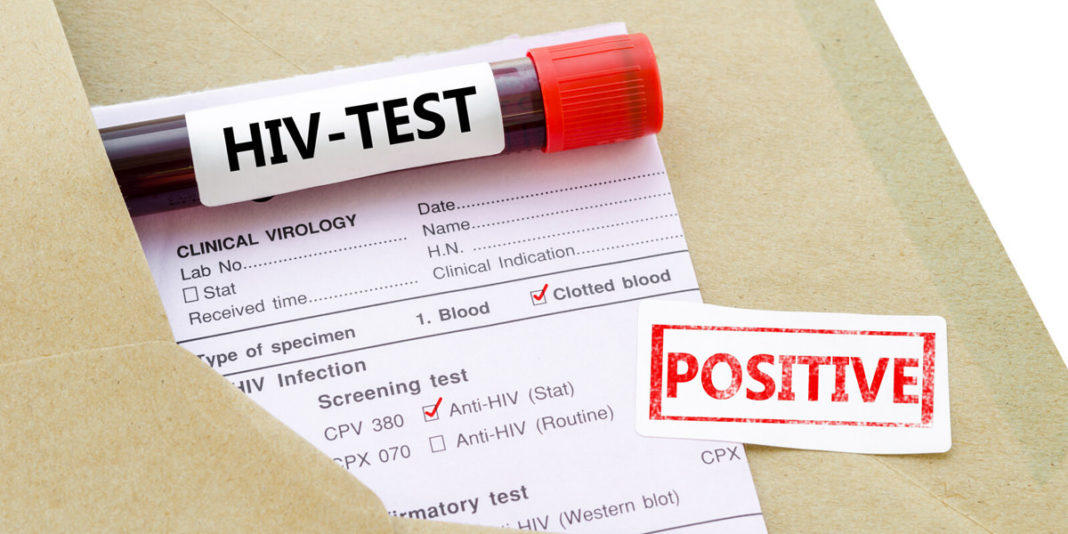Whether you have already made the decision to start your chase or if you’re still thinking about it like me, knowing your HIV status is something you’ll probably want to know about at some point. Since bug chasing is centred around HIV, this article provides you with further information about the different types of HIV tests that are currently available. You might already have a feeling about your HIV status, but the only way to know your status for certain is to get tested. If you’re thinking about getting tested or wondering about the testing process, this article will explain the three different types of HIV tests, the window period that can affect the test outcome and how long you’ll have to wait to receive your results.
There are multiple ways you can look at HIV testing. You might dread getting tested, because the process makes you nervous, or you might be worried about being judged by a blood collection technician or a doctor. When it comes to bug chasing, emotions can already run high and it can be the same with getting tested for HIV, which is why some people don’t want to know their status, because it makes them anxious just thinking about it. On the other hand, some bug chasers are eager to find out whether they have been successful with their chase, so receiving test results can be an exciting time for them, hoping the result is the one they desire.
If you’re wondering, I get tested for HIV regularly and I’m currently HIV-negative. I am getting more comfortable with the blood test process, even though I don’t like needles, but you don’t have to get your blood tested by a laboratory to find out your HIV status. You can get an oral swab if you don’t like needles, with a super fast response time. In many parts of the world, you can buy HIV self-test kits, which provide you with a result within 20 minutes. This is a great way to get tested for HIV in the comfort of your own home, plus you don’t have to worry about your test results being reported to anyone, but there are some limitations with these types of tests due to the window period.
As it takes time for HIV to be detected in the bloodstream, HIV testing does have its limitations. HIV can be detected for most people within one month of being infected, but for some people, it can take up to three months for the virus to show up in test results. The window period is the time between HIV infection and the production of antibodies, which is what the most common HIV tests detect in the blood. This means that a newly infected person may receive an HIV-negative test result within the window period, but could actually be HIV-positive and still be able to transmit the virus to others, which is why regular testing is important.
Summary of the Different HIV Tests
There are three different types of HIV tests available that look for different things and have varying window periods. This table provides you with a summary of these tests and more detailed information can be found underneath the table.
| TEST TYPE | TESTS FOR | WINDOW PERIOD |
|---|---|---|
| NAT | Genetic material belonging to HIV | 10 to 33 days |
| Antigen/Antibody | p24 viral proteins | 18 to 45 days |
| Antibody | HIV antibodies | 23 to 90 days |
NAT Test
This test involves drawing blood from a vein using a syringe and looks for genetic material belonging to HIV in the blood. This type of test can be used to tell if a person has HIV and also check how much virus is present in the blood (viral load). A NAT test can detect HIV earlier than any of the other type of HIV tests currently available, but it’s not used as frequently for screening, as the NAT test is very expensive. Testing is performed in a laboratory and this test has the smallest window period, which is estimated to be between 10 and 33 days. The timeframe for receiving test results from the laboratory can vary, but it usually takes several days
Antigen/Antibody Test
This test involves drawing blood from a vein using a syringe and looks for both HIV antibodies and antigens. Antibodies are produced by your immune system when you are exposed to HIV and antigens are foreign substances that cause your immune system to activate. This test looks for p24 viral proteins, which are produced before antibodies develop. An antigen/antibody test is performed in a laboratory and the window period is estimated to be between 18 and 45 days. This test can also be done rapidly by using blood taken from a finger prick or oral fluid, but the window period for the rapid test is longer and is estimated to be between 18 to 90 days. Laboratory results can take several days, but blood prick and oral fluid results can take under 30 minutes.
Antibody Test
This test involves drawing blood from a vein using a syringe and can also use blood from a finger prick or oral fluid to test for HIV antibodies. Rapid HIV tests and HIV self-tests use this method and can provide results within 30 minutes, as the blood does not need to be sent to a laboratory for testing. This can be the most convenient and private method for getting tested for HIV, but the window period is the longest compared to the other tests and is estimated to be between 23 to 90 days. Laboratory results can take several days, but blood prick results can take under 30 minutes and oral fluid results can take under 20 minutes.

If you wanting to warm up to the idea of HIV testing, HIV self-test kits are a great way to get started. These tests also give you a good indication about your HIV status, subject to the window period. It’s important to be aware that HIV self-test kits provide initial screening results, but do require laboratory testing if a positive (reactive) result is found to verify the accuracy of the test. You can purchase HIV self-test kits from the following websites, and if you live in a location not listed, you might be able to find some companies that can ship a test kit to you, but just be sure to check they meet the safety standards for your location, the company is reputable and the test kits are reliable before making a purchase.
- Australia: Atomo – https://www.atomohivtest.com/home.php
- Canada: bioLytical INSTI – https://shop.insti.com/insti-hiv-self-test
- Europe: autotest VIH – http://autotest-vih.eu/en/
- United Kingdom: Simplitude ByMe – https://simplitudebyme.com/
- United States: OraQuick – http://www.oraquick.com/
If you are wanting to keep on top of your HIV status, the medical recommendation is to get tested every three months. A great way to remember this is to maintain a simple reminder system, with the changing seasons a great way to set up a schedule. As June 27 is National HIV Testing Day and September 27 is National Gay Men’s HIV/AIDS Awareness Day, both of these months coincide with the changing seasons, so you could choose to get tested every March, June, September and December. You could make a note on your calendar or add a reminder to your smart phone to help you remember. Once you get into a routine, you’ll find that getting tested is not as stressful as you might think and you can feel good about being aware of your HIV status.
As bug chasers, we feel connected to the virus for various reasons, which means understanding HIV is important. Knowing your HIV status means you know where you are on your bug chasing journey, which is why getting tested regularly helps you know whether you are still HIV-negative or whether you have become HIV-positive. You can also make the testing experience more exciting by looking at it differently. When most people are waiting for their test results, they are usually hoping the result is going to come back negative, but bug chasers are the opposite and are hoping for a positive test result. This means that once you get past the needle part of the testing process, waiting for the test results can be more about an internal build up of excitement, rather than nervousness.
Now that you know more about the different types of HIV tests that are available, it might help you think about HIV testing as an important part of your journey. For people who aren’t bug chasers, getting tested for HIV can be an extremely stressful experience, but as bug chasers, we can embrace the testing process by removing the focus of worry and replacing it with thoughts of hope. We can use the outcome of HIV test results as a tool to help us navigate through this life changing experience, so we can understand where we are at. HIV testing isn’t just for HIV-negative people, it’s important for HIV-positive people as well, as HIV testing reveals the CD4 count and viral load numbers, which will be discussed in an upcoming article. This means that HIV testing is useful for those of us who are HIV-negative or HIV-positive, making it important for everyone.
Further Reading:
- What kinds of tests are available, and how do they work? – https://www.cdc.gov/hiv/basics/hiv-testing/test-types.html
Featured Photo: © Can Stock Photo / Gamjai
Article ID: CC014
Version Control: 1.0 – October 15, 2021: Original article published.








It’s actually a conscious choice not to get tested, it keeps my sex life really Positive oriented, and is actually part of the sexual dialogue of a new guy I’m seeing. He calls my hole Schrodinger’s hole. It’s both Poz and neg. Poz cause I’ve been with Poz detectable men (him included lol) but not officially tested so neg. He’s doing his best to make sure that when we look in the box, it will contain HIV. lol. Sorry for the cheap reference to Schrodinger’s cat.
And no test too haha. I do get a lot of “feedback” cause I haven’t tested and am seeing and been with guys that are untested or detectable. But that’s the answer too, I don’t need to test if guys who breed me are detectable. I’m not going meds right away anyway. So not testing keeps HIV transmission the major theme of our sex lives.